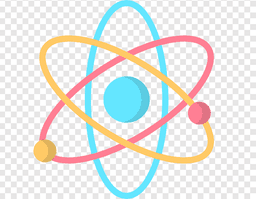With the goal of mapping every cell type in the human body as part of the worldwide Human Cell Atlas, this extraordinary achievement serves as a complete reference to help us better understand human health, illnesses, treatments, and vaccinations.
During a news briefing, Wellcome Sanger Institute cellular biologist Sarah Teichmann described it as "a Google Maps of the human body."
"What we're striving for is the street maps picture of individual cells and where they sit in tissues."
Improved laboratory technology and breakthroughs in machine learning were used in four projects involving over 2,300 researchers from 83 countries to map, compare, and dive deeper into life's basic building block: the cell.
New algorithms were essential in extracting crucial chemical patterns from the muck of biological noise.
"People frequently mistake the genome for the organism's blueprint, although this is not the case. Because each cell type employs a different set of parts, the genome is more of a parts list "During the press conference, Stanford bioengineer Steve Quake said.
"What we've been able to accomplish as a group here is help understand and interpret how different portions of the genome are utilized to identify different cell types and generate molecular definitions for all of the different cell types we've explored in these studies."
The massive databases, owing to tissue donors' generosity, will allow us to link these cells for a more comprehensive, whole-body view of our biological processes and the disturbances that lead to illnesses.
"We can have genetic polymorphisms in our DNA that are shared by all cells in the body," says MIT computational scientist Aviv Regev, "but the illness itself will only emerge in specific tissues, in certain organs, and that will happen based on the genes that the cells actually use."
Her research, coordinated by MIT computational biologist Gökcen Eraslan, created experimental techniques to precisely profile more cell kinds than ever before, allowing the atlas to be compiled and searched.
"We've proven in our work that this technique may provide critical insights regarding the function of cells and tissues in many illnesses," Regev said. "This will drive fresh scientific and biomedical inquiry targeted at a common objective of changing medicine."
To corroborate their findings, the researchers used studies such as signaling molecule assays in organoids to supplement their findings.
The molecular profiles of 400 different cell kinds (each type photographed and annotated by specialists) were collected from single-cell RNA sequencing of almost half a million live cells in one of the datasets named Tabula Sapiens.
It revealed how some cell types are similar no matter where they are found in the body, whilst other cell types are significantly distinct in various tissues.
While numerous genes responsible for illnesses have been discovered, little is known about the tissues and surroundings in which these genes manifest. Researchers may use cell mapping information to identify these tissues and explore which types of cells work together to generate a disease, resulting in new therapeutic targets.
Furthermore, a healthy cell atlas can disclose where else a treatment's targeted molecule will be expressed in the body, allowing Regev to evaluate if there will be toxicity.
"We also used the opportunity to look at the non-human cells that are present in the intestines, the microbiome, as a function of location," Quake added.
"As you proceed into the intestines, the species has a really rich and intricate structure."
Our symbiotic microorganisms are extremely important to our health.
The new results have been published in a number of studies; a few of teams focused on the immune system, searching for immune cell sites and how they mature from a developmental standpoint.
Chenqu Suo and his colleagues found a novel type of immune cell that appears to recognize self antigens. Teichmann believes it has a role in training the immune system to tolerate our own healthy tissues.
These are only a few of the intriguing potential uses of a healthy cell atlas, and as more experienced and fresh scientists add to it, there will be much more to uncover.
"The Human Cell Atlas is dedicated to capturing the diversity of humans, not just a restricted vision of them," Regev added. "However, it is yet early."
"Variation will be the Human Cell Atlas' next generation," Teichmann remarked.

